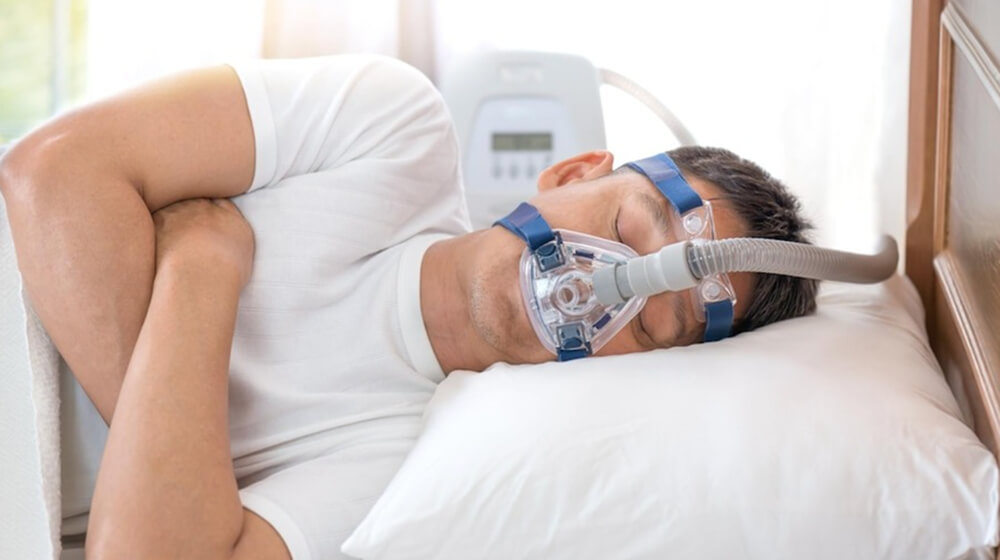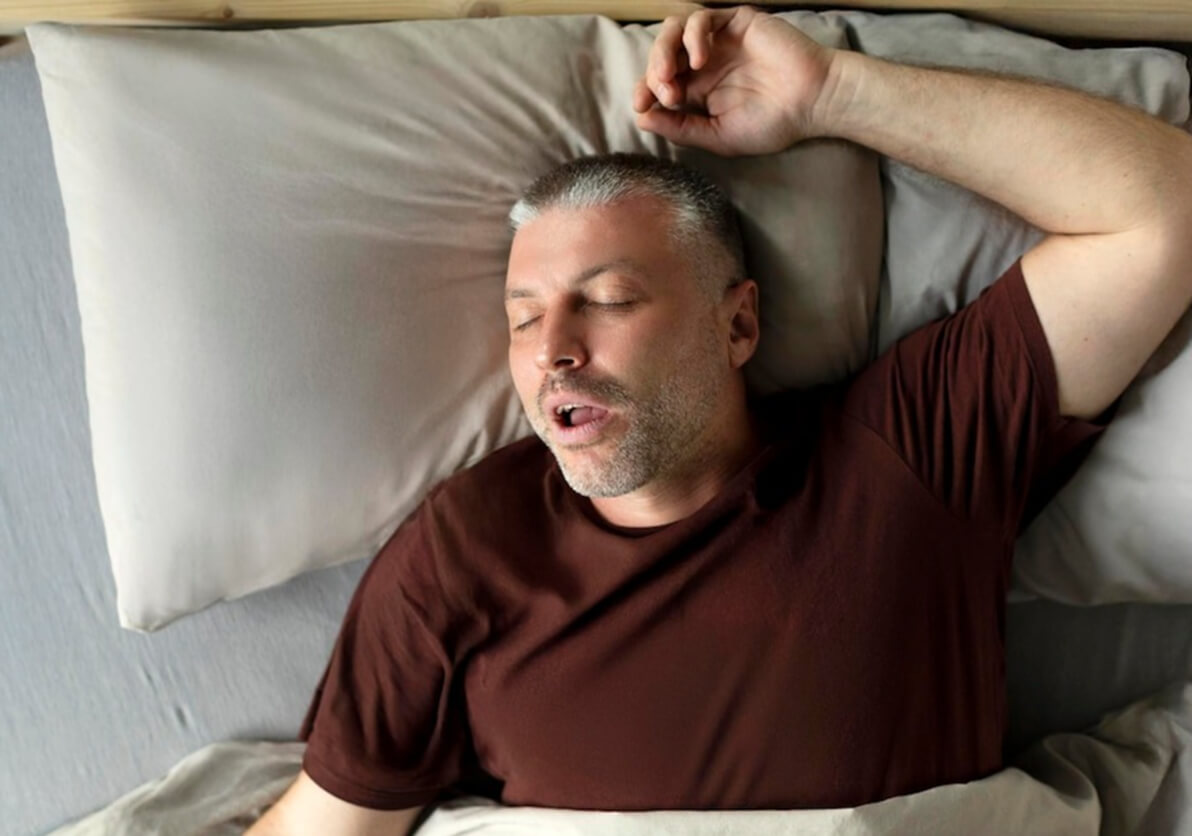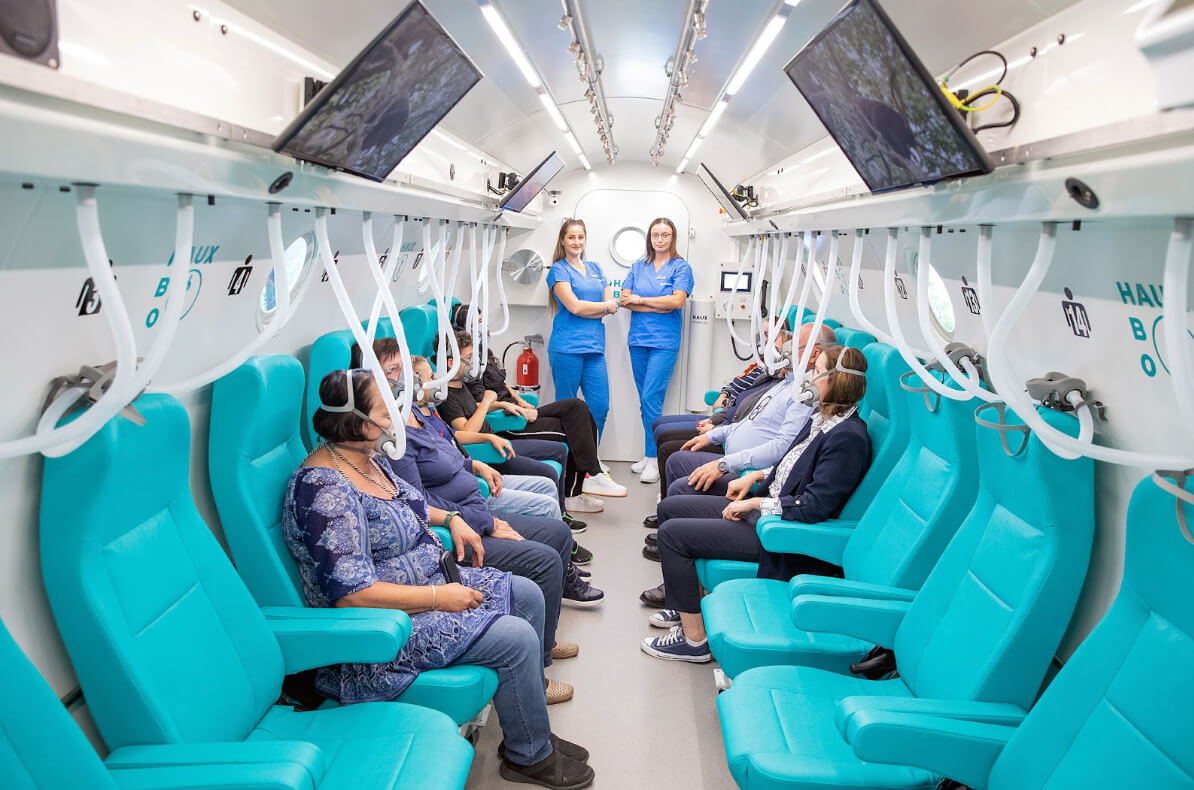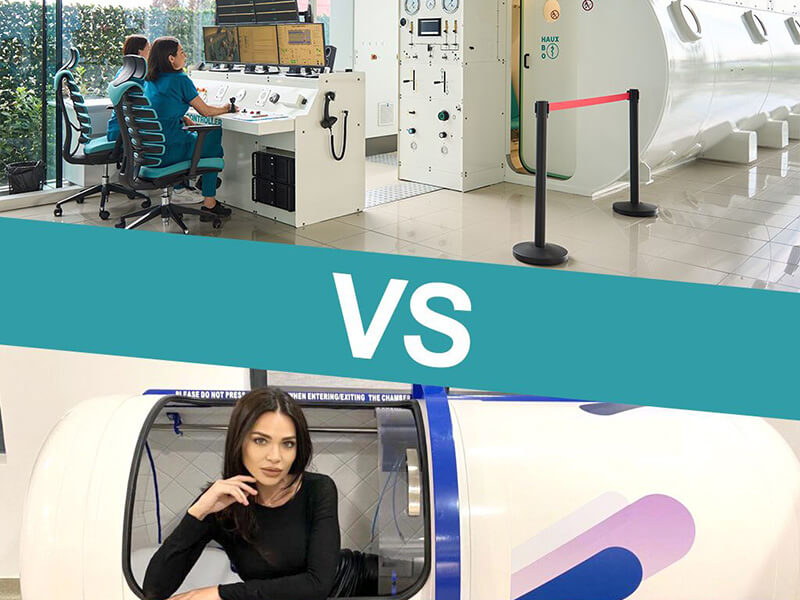
Article reviewed by: Dr. Sturz Ciprian, Dr. Tîlvescu Cătălin and Dr. Alina Vasile
Article updated on: 21-04-2025
Sleep apnea: what you can do for healthier sleep and a more balanced life
- How to recognize sleep apnea and why it shouldn't be ignored
- How to find out if you have sleep apnea - the diagnostic stages
- Treatment methods: how you can keep apnea under control and regain your sleep
- How to live well with sleep apnea long-term
Do you wake up tired, with headaches or feeling like you haven't slept at all, despite being in bed for 7-8 hours? Loud snoring and pauses in breathing during the night could signal a serious problem: sleep apnea. In Romania, specialists estimate that over 900,000 people could suffer from obstructive sleep apnea, many without being diagnosed. And, untreated, it can lead to serious health problems: from cardiovascular diseases to diabetes and depression. The good news is that, although there is no definitive "cure," there are a number of options that can significantly improve sleep and reduce associated risks.
How to recognize sleep apnea and why it shouldn't be ignored
Sleep apnea is characterized by repeated pauses in breathing during sleep, caused by partial or total obstruction of the airways. These pauses can last from a few seconds to over a minute and can occur dozens or even hundreds of times a night. These interruptions not only fragment sleep but also compromise adequate oxygenation of the body, which can affect the functioning of vital organs.
Classic symptoms include loud snoring, frequent awakenings with a feeling of suffocation, excessive daytime sleepiness, morning headaches, and difficulty concentrating. Affected individuals may experience mood changes, decreased performance at work, and even increased risk of car accidents due to fatigue.
In the long term, untreated apnea can lead to hypertension, arrhythmias, myocardial infarction, stroke, and even neurocognitive disorders. According to a report by the Romanian Society of Pneumology, only 15% of Romanians with sleep apnea are correctly diagnosed, which means that thousands of people remain without the treatment they need, thus increasing the risk of major health complications.
How to find out if you have sleep apnea - the diagnostic stages
The process of diagnosing sleep apnea usually begins with a detailed discussion with a pulmonologist, neurologist, or ENT specialist, who analyzes the patient's symptoms, medical history, and lifestyle. If the suspicion is confirmed, the next step is polysomnography – a complex investigation that monitors vital parameters during sleep: heart rhythm, brain activity (EEG), muscle movements, blood oxygen level, and respiratory flow. This can be done in a specialized laboratory or, in some cases, even at home, with the help of portable monitoring equipment.
Home sleep tests are an increasingly accessible option and provide relevant results especially for moderate or severe forms. Depending on the diagnosed severity (mild, moderate, or severe), the doctor recommends a personalized therapeutic plan, which may include CPAP, oral devices, hyperbaric therapy, or surgical interventions. It is essential that the diagnosis be made as early as possible, to prevent the occurrence of complications associated with deficient oxygenation during the night.

Treatment methods: how you can keep apnea under control and regain your sleep
Although sleep apnea may seem like a permanent challenge, the good news is that there are multiple solutions that can make a real difference in everyday life. Depending on the severity of the condition, age, general health status, and lifestyle, treatment can be personalized and adapted for optimal results. From classic solutions, such as CPAP, to modern complementary therapies, such as hyperbaric oxygen therapy, the options available today offer patients a real chance to improve their sleep and general health. It is important to start the treatment process informed, with confidence and consistency.
CPAP therapy: standard in apnea treatment
The most common solution is CPAP (continuous positive airway pressure) therapy, which involves wearing a mask during sleep. The mask is connected to a device that provides a constant flow of air, keeping the airways open.
Although adaptation to the mask can take a few days or weeks, the benefits are undeniable: reduction of apnea episodes, improved sleep quality, decreased daytime sleepiness, and reduced cardiovascular risks. A study published in the Journal of Clinical Sleep Medicine showed that 70% of patients observed a significant improvement in general condition after three months of constant use of CPAP.
Oral devices, an effective alternative
For mild to moderate forms of apnea, oral devices represent a simple and friendly solution. These are special mouthguards, personalized by a dentist experienced in somnology, which perfectly mold to the shape of the mouth. Through a gentle repositioning of the jaw or tongue, these devices help keep the airways open during sleep, reducing the risk of breathing pauses. They are comfortable, easy to use, and do not require bulky or noisy devices. Therefore, they are an excellent option for patients who do not get along with CPAP therapy or who travel frequently.
Surgery, the solution for severe cases
For patients who do not respond to non-invasive therapies, there are also surgical options designed to restore the freedom of breathing at night. These interventions aim to open and maintain free airways and may include procedures such as removal of excess soft tissue from the neck area (uvulopalatopharyngoplasty) or repositioning of the jaws through orthognathic surgery. In certain carefully selected cases, modern implants that stimulate the hypoglossal nerve can be used, thus preventing the collapse of the tongue during sleep.
These methods are recommended mainly for severe forms of obstructive apnea, when other therapies have not given results or are not tolerated. Although more invasive, the interventions can have a significant impact on the quality of life, considerably reducing the number of apneic episodes and the dangers associated with lack of oxygen during sleep. With an experienced surgical team and careful evaluation, surgery becomes not just a possible solution, but a real path to a calmer and healthier sleep.

Hyperbaric therapy: an unexpected ally in recovery from apnea
One of the most innovative complementary approaches is hyperbaric oxygen therapy (HBOT). In a special pressurized chamber, the patient breathes 100% oxygen, and this process significantly increases the amount of oxygen dissolved in the blood.
A study published in Undersea and Hyperbaric Medicine Journal, showed that sleep apnea patients who underwent 15-20 sessions of hyperbaric treatment exhibited a significant reduction in daytime sleepiness, better oxygenation during the night, and a decrease in apnea episodes recorded at subsequent evaluations. Additionally, studies conducted on patients with mild cognitive impairment or post-COVID syndrome have confirmed the benefits of hyperbaric oxygen on neurological recovery.
This method is completely non-invasive and can be easily integrated into an existing therapeutic plan. There are already specialized clinics that offer personalized treatments in state-of-the-art hyperbaric chambers, with protocols tailored for each patient.
How to live well with sleep apnea long-term
Besides specialized therapies, lifestyle remains a key element. Reducing body weight, avoiding alcohol consumption in the evening, and quitting smoking are essential. Regular physical exercises contribute to toning the respiratory muscles, and a stable sleep routine naturally improves sleep quality.
It is important for patients to constantly monitor their health status, participate in periodic evaluations, and be open to complementary therapies, where appropriate. In Romania, more and more medical centers offer access to modern treatment solutions, with personalized protocols for respiratory, neurological conditions, and for post-operative recovery.




